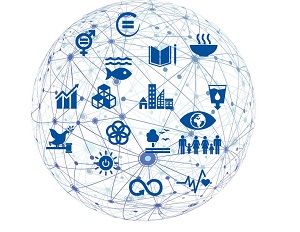ITU and Cisco have teamed up to release a sixty-one-page document detailing what needs to happen globally to facilitate the operation of the Internet of Things and how it will develop our world in the future. The report was titled: Harnessing the Internet of Things for Global Development.
Mr. Houlin Zhao, the ITU secretary-general wrote in his foreword to the report:
"The Internet of Things is not a single, unified network of connected devices, but rather a set of different technologies which can be put to work in coordination together at the service and to the ultimate benefit of people in both developed and developing economies. This set of Internet of Things technologies is realizing a vision of a miniaturized, embedded, automated environment of devices communicating constantly and automatically. However, connecting up devices or robots (whether they are bridges, fridges or widgets) is only a means to an end -- the really interesting part arises in terms of what can be done with the data obtained, and the learning outcomes for improving the future."
Cisco outlines three categories of society where IoT has directly changed the way the world does things:
| Level: | Individual | Community | Society |
| IoT |
Smart phones Weareables |
Connected Cars Health Devices Smart Homes |
Smart Cities Smart Grids |
| Examples |
GPS, Fitbits Visa Paywave Mastercard Paypass Employee passes |
Intelligent Transport Systems Event Data Recorders (EDRs) Blood pressure monitors Remote burglar/heating systems |
Smart metering Smart water meters Traffic monitoring |
| Data |
Mobile money Fitness data GPS location-based data |
Speed, distance, airbag, crash locations/alerts Heart rate, blood pressure, diet, remote heating data |
Electricity/water Consumption & billing Traffic flow data |
| Intended Audience |
Individual person Immediate friends/family Banks, employers |
GP, health authorities, health & car insurance, police, social networks |
Authorities/regulators Utility companies Other citizens |
The report is a pretty comprehensive read to get up to date with what Cisco is doing in the world of Internet of Things and how far IoT has progressed in the world of today.

Hewlett Packard Enterprise Co. has also decided to chase the IoT market with a newly announced platform named the HPE Universal IoT Platform software. The software was engineered to look at all of the devices connected to a network and analyze data that these applications produce. They are a bit late to the game in terms of announcing a software solution for the future IoT networks their products will have to share but better late than never. The company confirmed that the software solution for will be able to run on any company or even personal server. Nigel Upton, HP Enterprise's director and general manager for IoT spoke to Wall Street Journal, indicating that they were also in talks with a car company that will utilize their new software. He said: "They [the car company] said, 'We don't want a killer application but a killer platform that allows us to integrate everything."
Gartner Research has said that IoT will grow at 31.7 percent CAGR by 2020. Getting involved in the industry is a time-sensitive issue if companies want to have the monopoly over the Internet of Things by 2020. However, competition lines are being drawn in the sand. IBM engineers are accusing Cisco of trying to corner the IoT market, whilst other companies jump into the profitable boat as well. It will be a battle, however, the IoT industry could be a market that separates the men from the boys and only the fittest will survive.
